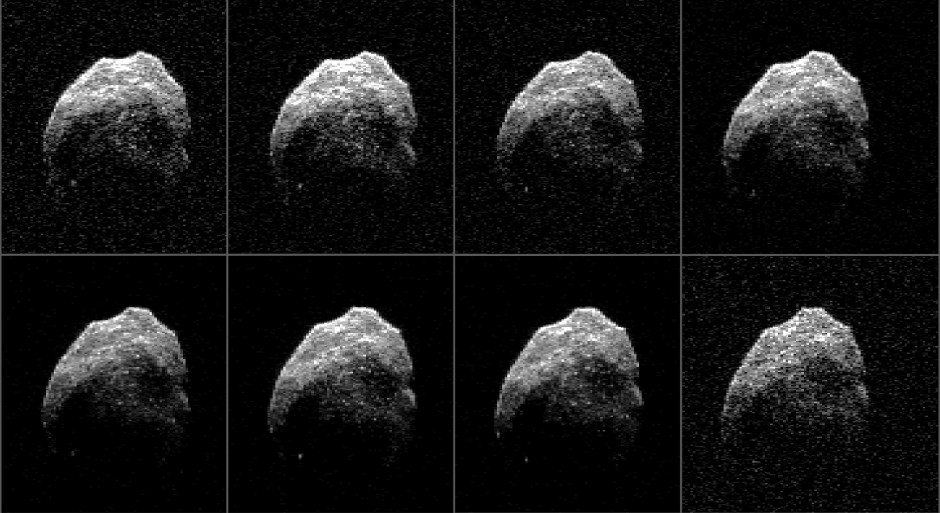
“The radar images of asteroid 2015 TB145 show portions of the surface not seen previously and reveal pronounced concavities, bright spots that might be boulders, and other complex features that could be ridges,” said Lance Benner of NASA’s Jet Propulsion Laboratory in Pasadena, California, who leads NASA’s asteroid radar research program. “The images look distinctly different from the Arecibo radar images obtained on 30 October and are probably the result of seeing the asteroid from a different perspective in its three-hour rotation period.”

“Working with our observatory partners, we were able to get our resolution down to less than 13 feet (four metres) per pixel,” said Shantanu Naidu, a postdoctoral student at the California Institute of Technology in Pasadena, and a member of the radar team. “It is a truly remarkable achievement — one which we will later be able to apply when future flyby opportunities present themselves.”
The next time that asteroid 2015 TB145 will be in Earth’s neighbourhood will be in September 2018, when it will make a distant pass at about 24 million miles (38 million kilometres), or about a quarter the distance between Earth and the Sun.
Radar is a powerful technique for studying an asteroid’s size, shape, rotation, surface features and surface roughness, and for improving the calculation of asteroid orbits. Radar measurements of asteroid distances and velocities often enable computation of asteroid orbits much further into the future than would be possible otherwise.



